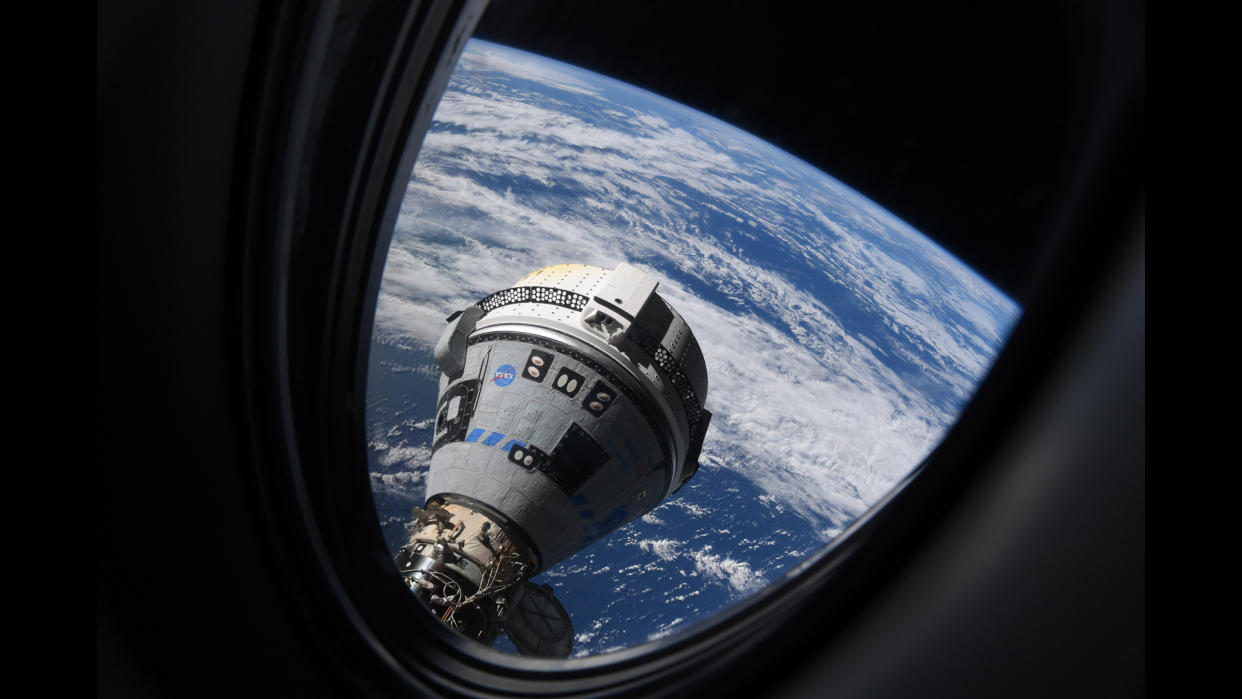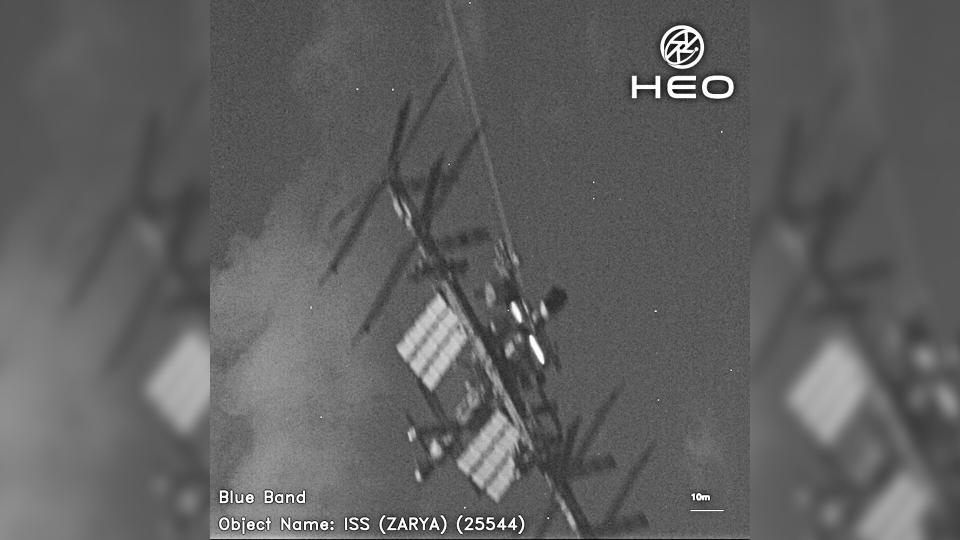ISS astronauts take shelter in Boeing Starliner and other return spacecraft after June 26 satellite breakup

Nine astronauts on the space station briefly moved to their docked return spacecraft late Wednesday (June 26) as a satellite broke up in low Earth orbit.
The Expedition 71 crew on the International Space Station (ISS) went to their three spacecraft, including Boeing Starliner, shortly after 9 p.m. EDT (0200 GMT), according to a brief NASA update on X, formerly known as Twitter. As the ISS follows a time zone identical to GMT, according to the European Space Agency, the astronauts were likely in their sleep period when the incident occurred.
The procedure was a "precautionary measure", NASA officials added, stating that the crew only stayed in their spacecraft for about an hour before they were "cleared to exit their spacecraft, and the station resumed normal operations."
NASA did not specify which satellite was associated with the incident, but satellite monitoring and collision detection firm LeoLabs identified a "debris-generating event" that same evening. "Early indications are that a non-operational Russian spacecraft, Resurs-P1 [or] SATNO 39186, released a number of fragments," the company wrote on X.
Related: How often does the International Space Station have to dodge space debris?
U.S. Space Command also reported the Resurs-P1 event, saying on X that over 100 pieces of trackable debris were generated. The military said it "observed no immediate threats and is continuing to conduct routine conjunction assessments." (A conjunction refers to a close approach of two objects in orbit to one another.)
Resurs-P1 launched on June 25, 2013 and operated until December 2021 — beyond its expected lifespan, according to RussianSpaceWeb. The Earth observation satellite was used for applications ranging from defense to emergency monitoring to agriculture, NASA says.
The amount of space debris in orbit generally is a growing concern. The North American Aerospace Defense Command (NORAD) is tracking more than 45,300 space objects overall as of today, according to SpaceTrack.org. This does not include non-trackable pieces, however. The Union of Concerned Scientists also lists 7,560 operational satellites orbiting Earth, a figure that belies the number of non-operational satellites that cannot be controlled.

NASA works with the U.S. military to monitor the area around the ISS. The space station is typically tasked to move (if there is time) if any trackable pieces roughly 2 inches (5 centimeters) in size come within a "pizza box"-shaped area of space surrounding the ISS orbit. That box is roughly 2.5 by 30 by 30 miles (4 by 50 by 50 kilometers) with the ISS at the center, according to agency officials.
NASA procedures also dictate that astronauts may shelter in their return spacecraft if the hazard, typically a very tiny one in statistical terms, brings a chance of needing to evacuate the ISS. This happened, for example, after Russia deliberately destroyed a satellite in November 2021 as part of a surprise anti-satellite test that other countries (including the United States) condemned.
The new NASA update did not specify how close the satellite pieces came to the ISS. LeoLabs stated the debris event it was monitoring released fragments between 9:05 a.m. EDT (1305 GMT) and 8:51 p.m. EDT Wednesday (0051 GMT Thursday, June 27).
Related: NASA confirms space debris in North Carolina was from SpaceX Crew Dragon reentry

The incident illustrates what NASA officials have been emphasizing about the Boeing Starliner spacecraft, which is more than three weeks into what was expected to be a 10-day Crew Flight Test mission. Starliner is on a test mission with two astronauts and is authorized to leave the ISS in case of emergency. (The other two crewed spacecraft docked to the ISS are a SpaceX Dragon carrying four astronauts, and a Russian Soyuz with three people on board.)
Starliner's nominal departure date, however, has not yet been released pending the review and testing of its thruster systems and helium supply because problems with these two aspects of the spacecraft were discovered on June 6. NASA Starliner astronauts Butch Wilmore and Suni Williams are now on ISS maintenance duties after performing that testing, according to several NASA updates on the space station blog. NASA officials did not respond to a Space.com request for a Starliner update sent in the early afternoon EDT on Wednesday.

On Friday (June 21), NASA said the departure of Starliner will be sometime after July 2, following an expected spacewalk on that day. But it is also unclear if that spacewalk will proceed as a coolant leak halted extravehicular activity on Monday (June 24). ISS astronauts subsequently performed a "spacewalk review", NASA officials have said, and have been reviewing procedures and examining the affected spacesuit in the days since.
Boeing and NASA officials have said that developmental missions such as Starliner often fall outside planned schedules due to the unexpected. And Starliner's Atlas V rocket provider United Launch Alliance, a joint venture between Lockheed Martin and Boeing, provided a positive update to reporters yesterday (June 26) during an unrelated teleconference about future launches for ULA's new Vulcan Centaur rocket.
RELATED STORIES:
— International Space Station fires thrusters to dodge space junk
— NASA satellite's 'shocking' space junk near-miss was even closer than thought
— Will Boeing Starliner issues delay its 1st long-duration astronaut flight? It’s too soon to tell.
"They're all safe and sound," ULA CEO Tory Bruno told reporters during the teleconference. He was speaking about the Starliner crew, who are both former U.S. Navy test pilots used to developmental programs.
"I understand that the helium leaks that have been in the news are stable, and that there is a very, very large reserve of helium on board the vehicle, so there's no urgency to their return," Bruno added. "There's lots and lots of supplies on the space station. So again, no urgency there."
As NASA officials have said, Bruno noted that, aside from one thruster that will be shut off during undocking, the other 27 in the reaction control system are still operational. Five thrusters exhibited anomalies during docking; while one is offline, the issues on the other four thrusters "have largely cleared up," he said.
Bruno added that reviews of what to do next are still ongoing. "NASA and Boeing will bring them [the astronauts] home when they're done working and when they're ready and everything is safe."
